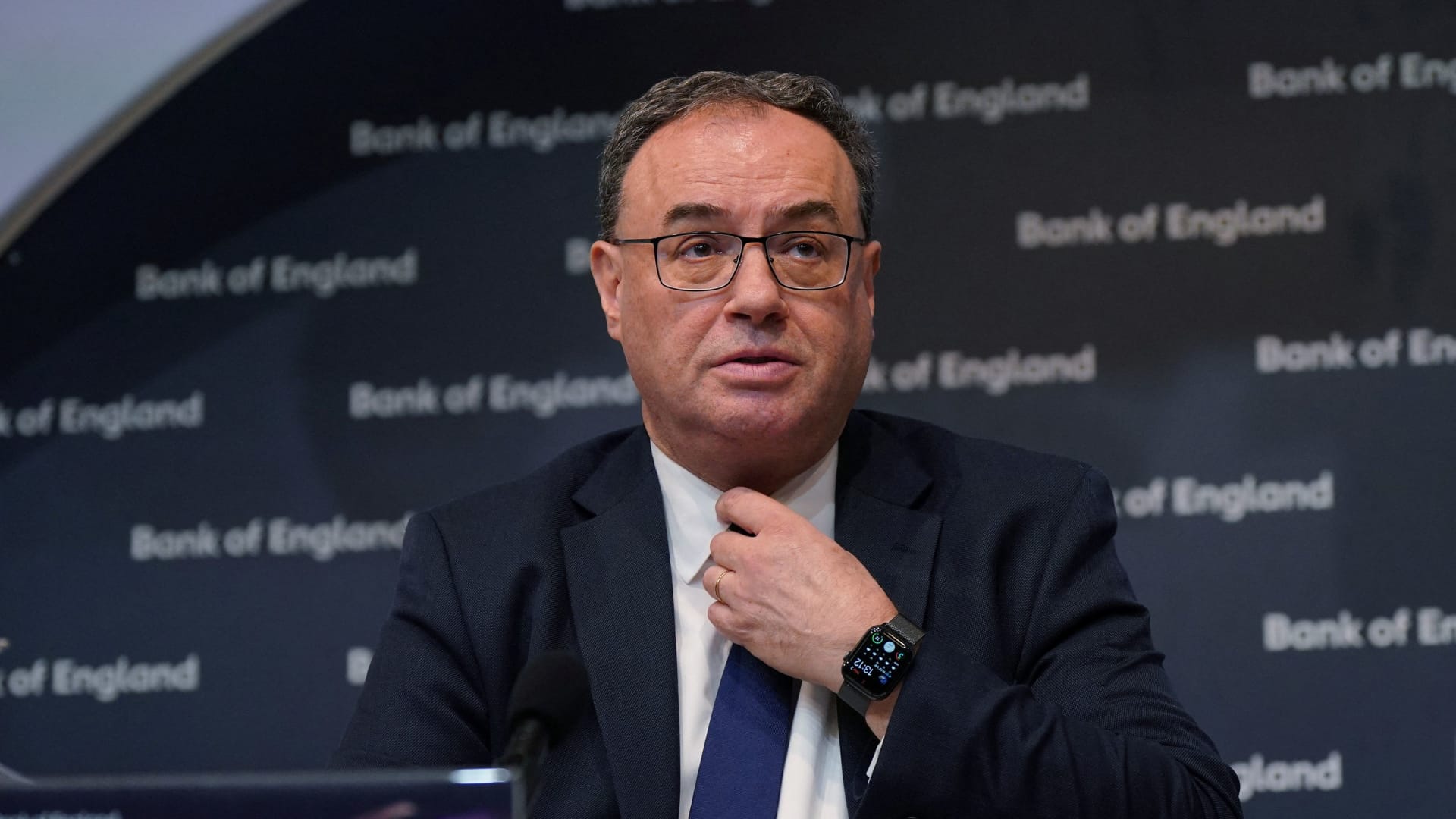U.S. dollar bills, British GDP and Euro currency bank notes are pictured on September 27, 2022 in Bath, England.
Matt Cardy | Getty Images News | Getty Images
LONDON — The British pound suffered its worst month against the U.S. dollar for a year in September, and strategists show little optimism for the rest of the year, as growth expectations weaken once again.
Sterling fell 3.75% against the dollar through the month, logging a decline not seen since the end of last summer. At that time, the U.K. currency was rocked first by political and economic uncertainty, then by the short-lived “mini-budget” announced by former Prime Minister Liz Truss, which pushed the sterling to a record low.
The pound also slid 1.26% against the euro last month, notching its weakest performance since December 2022.
Exchange rates have been impacted over the past two years by interest rate expectations, with higher rates generally making a currency more attractive for foreign investment.
Market expectations for peak U.K. interest rates rose as high as 6.5% over the summer, as the country battled sticky inflation that was holding at eye-watering levels, while consumer prices began to cool in other developed economies.
The Bank of England paused its run of 14 consecutive rate hikes in September, keeping its key rate at 5.25% — a level that economists and market watchers were quick to suggest likely represented its peak.

Pound/dollar exchange rate.
This “re-evaluation of expectations” of the peak rate and the profile of short-term UK interest rates pushed the pound lower against the U.S. dollar, Jane Foley, chief FX strategist at Rabobank, told CNBC.
There is likewise an expectation that the European Central Bank is done with rate hikes, she noted. But while the euro rate versus the pound “has retreated from the highs of the range that have dominated since late spring, the currency pair remains relatively elevated reflecting the recent build up of recessionary risks facing the U.K. economy,” Foley said.
“The Bank of England is, amongst the G10 central banks, probably in the hardest position,” Jim McCormick, macro strategist at Citi, told CNBC’s “Squawk Box Europe” on Wednesday.
“They need to balance an increasingly weaker growth outlook with very sticky high inflation. I think part of sterling’s weakness is less pricing for Bank of England going forward, I think part of it is this recognition of low growth and high inflation, and I do expect sterling to weaken further from here.”
In spite of monetary tightening by the Federal Reserve, the U.S. economy is forecast to grow between 1.5% and 1.9% this year.
Even as its biggest economy Germany falls into a recession, the ECB expects 0.7% growth in the euro zone this year.
That compares with 0.5% growth forecast by the Bank of England for the U.K., with the Organization for Economic Co-operation and Development (OECD) predicting even lower expansion, near 0.3%. The picture is brighter than it was a year ago, but the prospect of a mild recession remains on the cards.
Decline against the dollar
Research group Capital Economics forecasts a fall in the pound to $1.20 by the end of the year. This is because of the global landscape, rather than because of expectations of lower interest rates versus the U.S. or euro zone.
“When U.K. interest rates are eventually cut late in 2024, we suspect rates will be reduced further and faster than investors expect,” economists Ashley Webb and Joe Maher said in a note, forecasting a rate cut to 3% in 2025, compared to the current expectation of 4.5% by the end of 2025.
Michael Cahill, G10 FX strategist at Goldman Sachs, is equally downbeat on the pound and forecasting a trade below $1.20.
“It’s back to Fall and we are PSL’ing — Predicting Sterling Losses,” Cahill said in a note. He said that is primarily because the BOE’s latest decisions have shown a dovish bent tilt that prioritizes growth and recent developments over the bigger picture.
“Either they add less restriction over time because they allow for more inflation tolerance, or the recent cyclical data are a genuine sign of more of a cyclical downturn than we think. Both are negative for the currency,” Cahill said.

